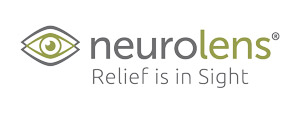

Jaclyn Munson, OD, FAAO, of Fort Collins, Colorado, treats plenty of patients who suffer from eye strain, chronic headaches and a stiff neck. Many have written these symptoms off as part of a stressful lifestyle with too much time at a computer or staring at work. However, while many of these pains could be caused by stress or posture, for example, a misalignment of the eyes can irritate the trigeminal nerve, the largest nerve connected to the brain. Dr. Munson now prescribes neurolenses®, the first prescription lenses that add a contoured prism to bring the eyes into alignment, correcting misalignment that can irritate and overstimulate the trigeminal nerve.
Dr. Munson’s practice, Fort Collins Family Eye Care, emphasizes the preventative approach offered in the technology and early detection of symptoms. The practice is home to the Vision Performance Center, offering vision therapy services, and Eye Spa, a spa dedicated to natural enhancement of the ocular surface, ocular skin care and nutrition. Being able to prescribe neurolens is a bridge between all of these aspects. Ruling out phantom, or pseudo dry eye, enhancing our vision performance outcomes, and preventing further complications for trigeminal dysphoria.
“When a patient has double vision or chronic headaches, there are a plethora of factors that we have to rule out,” she says. Sixty-five percent of patients suffer from symptoms associated with trigeminal dysphoria and only 10 percent report these to their provider. A neutral platform to stir the conversation stems from a simple, seven-question neurolens Lifestyle Questionnaire that patients fill out, rating the frequency of symptoms such as headaches, shoulder/neck stiffness, tired eyes, light sensitivity and dizziness on a scale from 1 to 5.


A patient who scores high on several of these factors is brought to the neurolens measurement device, a three-minute series of visual tests that objectively measure misalignment. The neurolenses use customized, contoured prism to adjust for these misalignments, essentially calming down the constant, proprioceptive movement that the eyes make to compensate for this via the trigeminal nerve. “It’s a proven avenue to allow root cause conversations to take place and guide patients’ decisions in their care.”
The results have been impressive in her practice, she says. After formal neurolens prescriptions have been integrated in our patients’ lifestyles, they report relief of symptoms within 30 to 60 days for a vast majority of the cases. “We set expectations and walk with our patients as the journey to wellness unfolds,” says Dr. Munson.
“It’s a diagnosis and category of technology that our industry hasn’t monitored before and the need is grand.” She says the results of neurolens testing provides her with objective data about the patient’s visual function. Patients who opt for neurolenses can use their frame allowance but pay for the lenses outside of insurance. Patients report the “savings in pain” is priceless compared to the investment in neurolenses.
The possibilities for a customized solution are nearly endless. Some patients wear plano neurolenses with contact lenses, and others use them primarily for occupational use, such as at work. “The more patients wear them, the greater the therapeutic benefits.”



